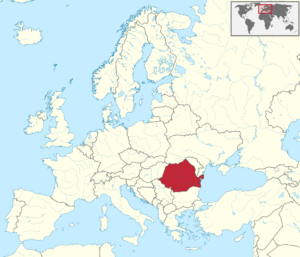 Sometimes, cautionary events and noteworthy parallels are lost in the annals of history. This is often due to the relentless march of time rather than willful neglect. Life moves on, and people forget. Arguably, it is good to revisit long-forgotten memories, particularly when they shaped a generation and wounded a society. A case in point can be found in examining the consequences of Decree 770, a piece of legislation issued in 1966 by Nicolae Ceaușescu (1918–1989), the former communist dictator of Romania. Decree 770 was a population growth policy enacted to increase the number of people in the population, with the stated goal of increasing the number of people in Romania from 19 to 25 million. While Decree 770 went through some amendments over the years, it ultimately instituted a nationwide family planning program that
Sometimes, cautionary events and noteworthy parallels are lost in the annals of history. This is often due to the relentless march of time rather than willful neglect. Life moves on, and people forget. Arguably, it is good to revisit long-forgotten memories, particularly when they shaped a generation and wounded a society. A case in point can be found in examining the consequences of Decree 770, a piece of legislation issued in 1966 by Nicolae Ceaușescu (1918–1989), the former communist dictator of Romania. Decree 770 was a population growth policy enacted to increase the number of people in the population, with the stated goal of increasing the number of people in Romania from 19 to 25 million. While Decree 770 went through some amendments over the years, it ultimately instituted a nationwide family planning program that
- enforced a strict ban on abortion,
- banned contraception, and
- required that women under the age of 45 have five children.
Women who surpassed the five children goal were awarded medals of honor.
- Five or six children, the Maternity Medal
- Seven to nine children, the Maternal Glory Medal
- Ten or more children, the Heroine Mother Medal
Ceaușescu believed that increasing the fertility rate, the number of children born to someone able to give birth throughout their lifetime, was the most effective way to achieve the government’s population goal.
 Did Decree 770 work? No. Ultimately, it backfired as was evident in the spike in maternal mortality or frequency of death in a population from 85 to 169 live births per 100,000 due to pregnancy and childbirth complications and illegal abortions. It also resulted in a dramatic increase in the number of children in Romanian orphanages. These institutions were underfunded and understaffed. The children were not properly cared for, and many had extensive emotional and behavioral issues. Known as the “decreței” or Decree 770 generation, estimates are that hundreds of thousands grew up in these state-run orphanages and at least 170,000 children were in them when the Romanian Revolution occurred in 1989. These children were abandoned because their families were unable to handle the financial, emotional, and social responsibility of raising so many children.
Did Decree 770 work? No. Ultimately, it backfired as was evident in the spike in maternal mortality or frequency of death in a population from 85 to 169 live births per 100,000 due to pregnancy and childbirth complications and illegal abortions. It also resulted in a dramatic increase in the number of children in Romanian orphanages. These institutions were underfunded and understaffed. The children were not properly cared for, and many had extensive emotional and behavioral issues. Known as the “decreței” or Decree 770 generation, estimates are that hundreds of thousands grew up in these state-run orphanages and at least 170,000 children were in them when the Romanian Revolution occurred in 1989. These children were abandoned because their families were unable to handle the financial, emotional, and social responsibility of raising so many children.
Romania isn’t the only cautionary tale of government-enforced family planning. China’s One Child Policy, though enacted for different reasons, had a similarly chilling effect on the lives of women, children, and families alike. Enforced between 1979 and 2015, the policy was instituted by the Chinese Communist Party to curb the growth of the population, which at the time was nearly 969 million people. The One Child Policy, which was enshrined in the Chinese constitution, limited the number of children a family could have to one. While some exceptions were made for rural families (particularly if their first child was a girl), the One Child Policy was strictly enforced, with benefits and financial incentives given to those who followed the rules and punishment like forced abortion and sterilization to those who did not.
The Chinese approach to population control was overlaid with a strong cultural preference for sons over daughters. Historically, Chinese society has emphasized patriarchy, with lines of descent traced through the paternal side of the family and characterized by male dominance. The family name, inheritance, and elder care are among the things that fall on the sons of the family. This push for sons had negative short-term effects in that girl babies were either aborted, abandoned, or put up for adoption. Today, estimates are that as many as 20 million girls/women are missing from Chinese society because of the One Child Policy. This has resulted in a sex ratio imbalance, or an imbalance in the number of men to women in a society, and the emergence of what is known as the “Bachelor Army,” in which whole communities are made up entirely of men, with no women to marry or start their own families. In areas with a shortage of women, bride kidnapping, or more accurately, bride trafficking, has emerged, as have suggestions that some men in China should abandon the tradition of monogamy, marriage between two people, in favor of polyandry, a marriage between one wife and multiple husbands.
Did the One Child Policy work? No. For the families that faced the day-to-day consequences of the policy, lingering issues remain. These range from the aforementioned sex ratio imbalance to the psychological impact of forced family planning. As the documentary One Child Nation highlighted, even though the policy was reversed, its impact has not receded, with parents wondering what happened to the children they abandoned, and those children (many of whom were adopted by families in the U.S.) wondering and even searching for their biological families.
For the nation of China overall, population growth did indeed slow down, but as of 2025, it has exceeded 1.4 billion people. The greatest cons of the heavy-handed approach to demographics may be the unintended consequences. When it comes to demographics, societies typically demonstrate rapid growth, slow growth, or zero growth in terms of the proportion of children to seniors. China’s One Child Policy effectively created a situation in which there are significantly fewer children in comparison to seniors. This results in negative growth. Whereas Chinese families before 1979 had an average of four children, dropping quickly to one child resulted in long-term consequences. This includes having fewer people in the workforce, fewer people to grow the society, and fewer people to care for the elderly. The numbers 4:2:1 are often used to describe the population change that is heading toward China. In other words, four grandparents and two parents will all be taken care of by one child. This is on top of the family that the child might like to create for themselves someday. It is worth noting that the demographic hole of the One Child Policy is resulting in a generation not only devoid of siblings but also without aunts, uncles, and cousins. In other words, there is no one else to step in and help care for mom, dad, and grandma. Add to this the fact that China has a Filial Piety Law, which requires adults to financially support and regularly visit their parents, and the relatively early retirement age of 60 for men and 50 for women, and one can see that challenges are coming down the pipeline. As reported by the Centre for Eastern Studies, China is facing a demographic crisis of its own making.
 Currently in the U.S., the fertility rate is 1.6 children, which is below the slow growth replacement rate of 2.1. Not surprisingly, these figures are far from the fecundity rate, or the potential number of children a person is able to give birth to throughout their lifetime, which is around 15 to 20 children. While some, like the mother of 19 children, Michelle Duggar, choose to have exceptionally large families based on their religious beliefs, most choose to limit their family size not only for personal, emotional, and financial reasons, but also broader macro issues such as economic, social, environmental, and political concerns.
Currently in the U.S., the fertility rate is 1.6 children, which is below the slow growth replacement rate of 2.1. Not surprisingly, these figures are far from the fecundity rate, or the potential number of children a person is able to give birth to throughout their lifetime, which is around 15 to 20 children. While some, like the mother of 19 children, Michelle Duggar, choose to have exceptionally large families based on their religious beliefs, most choose to limit their family size not only for personal, emotional, and financial reasons, but also broader macro issues such as economic, social, environmental, and political concerns.
In 2022, the Supreme Court overturned Roe v. Wade, a 1973 ruling that gave American women a federally protected right to abortion. More recently, there have been increasing reports on efforts to restrict access to birth control at the state level. These developments must be considered against the backdrop of the emerging pronatalism movement, whose stated goal is to encourage women to have as many babies as possible in a bid to grow the society and boost the economy. Interestingly, proponents of pronatalism include members of the highest echelons of government, many of whom have multiple children, but are also part of society’s wealthy class.
With this in mind, we are left wondering what the U.S. can learn from the tales of Romania and China. Arguably, the biggest takeaway is that families must be flexible to make choices based on the circumstances of their lived experiences. The role of government should be to provide a safe space for them to make choices. A “safe space” includes a stable economy, growing incomes, a clean environment, affordable housing, reasonably priced healthcare, quality food, and a solid educational system. Nothing more. Nothing less. There is no “one size fits all” approach to family, and trying to legislate such is doomed to failure. That was true in Romania in 1966, China in 1979, and the United States today.
Thompson is a co-owner of UITAC Publishing. UITAC’s mission is to provide high-quality, affordable, and socially responsible online course materials.
Images Used:
- “Română: Portret Nicolae Ceaușescu” by Unknown. The image is available from the Romanian Communism Online Photo Collection. This image has not been altered.
- “Romania in Europe” by TUBS is licensed under CC BY-SA 3.0. This image has not been altered.
- “Population Pyramid” by Dnfls is licensed under CC BY-SA 4.0. This image has not been altered.




